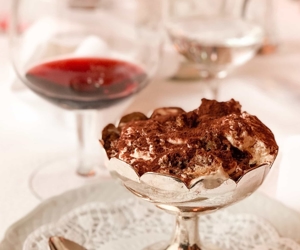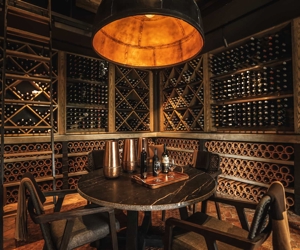The wine list: at some restaurants, it’s included as part of the regular menu. At others, you’re handed a 10-pound binder filled with wines you’ve never heard of. While the easiest way to order wine is to talk to the sommelier about your preferences and price point, some restaurants don’t have sommeliers. Even if they do, you can take a few simple steps to prepare yourself for a more productive conversation about what you want.
Whether you’re having a casual lunch or a lavish dinner, you can avoid the deer-in-the-headlights feeling when confronted with the restaurant’s wine list by following these easy tips.
#1. Do your research ahead of time.
If possible, check out the wine list before you go to the restaurant. Many have these posted online, where you can read through and research any varietals that sound interesting to you. As a note, wines are often listed in ascending order from lightest to heaviest—although, in some lists, they will be alphabetical or by region. When you pick your wine ahead of time, you can spend more time drinking and less time wondering what to order.
#2. Working with a tablet or an extensive list? Use the table of contents.
Some restaurants have their wine lists on tablets or in large binders, complete with tables of content. Don’t be shy about sorting and cross-referencing wines by region, varietal, and price. Check for a “sommelier’s list,” which some restaurants use to highlight personal favorites, wines of note, and those in peak drinking window.
#3. Decide whether to order by the glass or bottle.
Ah, the age-old question of whether to order a glass (or two) or an entire bottle. If you’re sharing with one or more people and you have similar tastes, sharing a bottle is most likely your best bet. If you’re alone and only want a glass, there’s no need to over-order. Generally speaking, you’re more likely to get more for your money by ordering a bottle instead of wine by the glass. Some restaurants will also offer carafes or half bottles as well.
#4. Try not to worry too much about pairing.
In an ideal world, you’d be able to drink the perfect wine with each course. But unless you’re doing a tasting menu with wine pairings, chances are you’ll compromise when it comes to picking a wine to complement the food. In a large party or with a multi-course meal, you can pick a varietal that pairs with a range of foods. In general, champagne goes with everything, and if you can’t decide between red and white, you can choose rosé. As always, it’s best to pick a wine that you know you’ll love instead of worrying about the perfect pair.
#5. Work within your budget.
If you know how much you want to spend on wine, look for something at that price point. There’s no need to be pressured into buying a more expensive wine simply because the sommelier or a friend said to. Talk to the waiter, research the wine list, or have an open conversation with the sommelier about your expectations and the price you’re looking for, and you’ll be sure to find something pleasing to your palate and your wallet.
#6. Keep an open mind.
There’s no need to be set on a certain vintage or varietal. Some tend to order the same wine again and again, and while there’s nothing wrong with enjoying a bottle you know and love, keeping an open mind will help you explore new flavors and lesser-known vintages or wineries. Some wines from cooler climates or challenging vintages have a higher natural acidity and lower pH levels that help them pair well with food.
#7. Don’t automatically order the second-cheapest bottle.
If you’re at a loss regarding what to order, some say to order the second-cheapest bottle of wine. This old trick is worthless, considering some restaurants price a bottle they want to get rid of at that point. However, most wine directors carefully select each wine on the list, and the markup can be negligible at higher price points. Choose based on your taste and preference instead, and you’re sure to be happier with your selection.
#8. When the wine comes, taste it and be honest in your opinion.
If you’re not a wine connoisseur, you might feel a little uncomfortable when the bottle is presented. This isn’t just a formality. You need to make sure the server brought the correct wine and sample it to make sure it isn’t corked. Take your time. Smell and taste the wine and tell the server or sommelier if you believe the wine has gone bad. For more information, read our blogs on Corked Wine and How to Tell If Wine Has Gone Bad.
#9. Sit back and enjoy!
Now that you’ve selected your wine, it’s time to sit back and enjoy your meal. You can also use an app on your phone or keep a written list of notes to track which wines you like, tasting notes, and more. Happy tasting!





